field notes
cuba, 2004
Cuba was the first tropical country I visited in my life: 2004, it was my first trip to this country and the very first to the tropics. Maybe because of that, but maybe because Cuba was so, I immediately fell in love with this place and knew at once that this visit won't be the last. It wasn't a photographic trip because my equipment was very poor that time. Although I was photographing a lot, my main goal was nature tourism rather than photography.
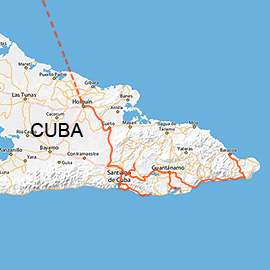
Since I hadn't travelled to such countries before and since my Spanish was very limited, booking a flight and a hotel from Europe was the only possibility that I could think of. After some research and reading of travel guide books I decided to go to the eastern part of Cuba which lies in the “real tropics”, i.e. in the tropical climatic zone.
In a tourist company in my city, I booked a flight and an accommodation in 4-stars hotel for two weeks. The flight was to Holguin — an airport serving touristic resorts at the Atlantic coast in eastern Cuba. The hotel where I was going to stay was at the Caribbean coast, however — near Santiago de Cuba. The travel agency sent a minibus to Holguin which brought us to the hotel after a couple of hours of drive. Although Santiago has one of country's main airports, it is being used more for national airlines — mainly to and from Havana — than for touristic charter flights from Europe.
I hadn't planned to visit any concrete places nor an itinerary for this trip. The decisions about destinations described below were made spontaneously — according to the opportunities that I found while being in the country.
baconao
Baconao is a large biosphere reserve in provinces Santiago de Cuba and Guantánamo. It begins about 20 km from Santiago, in the area near the villages Siboney and Daiquiri (The latter is famous for giving the name for a cocktail.) and extends south-east along the coast, towards the Lagoon of Baconao. There are several touristic resorts inside the reserve. In 2004, many hotels in Cuba were joint ventures with Europeans and Canadians. They were usually more expensive than those that were run by governmental companies but had a better quality of service. To explore the area of Baconao, I booked the stay in a hotel on the coast in about 30 minutes of drive from Santiago.
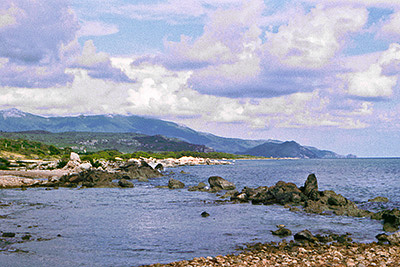
Entrance to Baconao Lagoon from Caribbean Sea
I will never forget my arrival first time in Cuba — as the airplane landed in Holguin. I still can recall in every detail almost everything I saw and felt — the palms at the landing field, the smell of hot and humid air that came that stroke me when I was leaving the airplane, the walk from the airplane towards the 70s-style airport building, the drive though the night... We stopped for a coffee in a hotel on the way. In the hall which was almost empty a lady was playing piano... After this break, we continued our way along the coast. I saw myriads of land crabs running on the road in the moon light. The bride orange moon was hanging very low above the horizon, and was huge! I had never seen such a huge moon in my life.
The hotel was certainly very good, but for me it appeared as if I were in paradise. The first thing that I heard when we were living the bus and entering the main hall were the sounds of Cuban music: a little band was playing Salsa for a small group of guests at the swimming pool. Except this one hotel with very few guests no other hotels in this area were functioning by that time. Another positiv circumstance was that the hotel was situated immediately inside the Baconao Biosphere Reserve and close to Baconao Lagoon — an almost untouched wilderness.
The first local animals that I saw already on the first morning were colibris — Cuban Emeralds (Chlorostilbon ricordii) — flying over flowers just in front of the window of my room.
At one of the lagoon banks there was a small and somewhat abandoned crocodile farm that had only four inhabitants — the endemic Cuban Crocodiles (Crocodylus rhombipher). The crocodiles didn't live in the wild in this lagoon and were kept in this farm only as attraction for occasional tourists. There was no official ticket desk, and not tickets at all, however the person who was in charge of the crocodiles was demanding payment for entry — presumably illegally.
The lagoon is surrounded by a mangrove forest, and the hills around it are covered by dry forest and shrubs. This vegetation is home of some impressive bird species, such as Smooth-billed Ani (Crotophaga ani), Cuban Tody (Todus multicolor), Great Lizard-Cuckoo (Saurothera merlini).
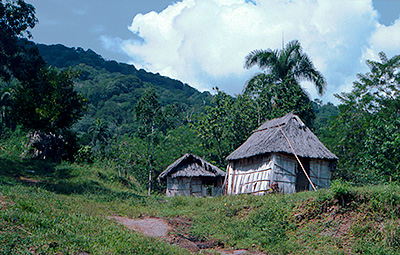
Traditional cabins in Sierra Maestra. Although Cuba is one of socially most advanced countries in Central America, such buildings are still common in the mountains.
More than by variety of birds I was impressed by abundance of reptiles. I was frequently seeing two Leiocephalus species, one Ameiva, three Anolis and sometimes even Cuban Iguanas (Cyclura nubila). The latter was present on cliffs along the road — for instance, at an exhibition of replicas of ancient Latin American sculptures. This place is on the left side of the road when you are going from the hotel to the lagoon.
The Caribbean coast of Cuba is one of world's best scuba diving hotspots. Even if you aren't (like me) a scuba diver, the coral reef just in front of the hotel offers great opportunities for snorkelling and photographing or just watching underwater life.
sierra maestra
Sierra Maestra is the highest mountain range on the island. Just like everywhere in the world, the mountains in Cuba are a place where the activities of humans were less destructive. Almost all forest in Cuba was logged already before the 20th century, but small parts of mountain rain forest remained in Sierra Maestra and adjacent mountains in the east.
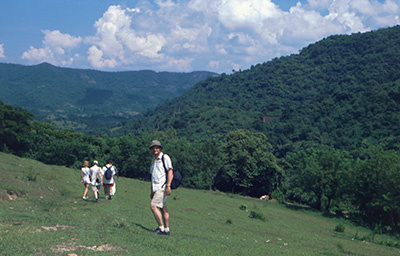
Community walk in Sierra Maestra.
I visited Sierra Maestra with an official tour organised by the state travel company of Cuba for a group of 5 persons. Two Suzuki Vitara cars brought us first to El Saltón waterfalls and after that to a village in the mountains where we had a short walk through nearby plantations of sugar cane, coffee, cacao, oranges, bananas and other fruits with a local school teacher acting as a guide.
Except numerous Anolis parcatus and A. at the waterfall, an one snake (presumably Tropidophis) that we found near the village I didn't see any wildlife. However, the landscape impressed me very much because it was the first time in my life I was seeing a tropical forest. Unfortunately this one-day trip was too short for exploring Sierra Maestra, and I can't report anything concrete about photographic opportunities, but this place is definitely worth a visit of a nature photographer.
guantánamo province and baracoa
Guantánamo is the easternmost province of Cuba named after its capital, Guantánamo town. Like so many places in this country the name Guantánamo is world famous — at least for the song “Guantanamera” (with lyrics of Cuban national poet José Marti), but now even more for the US navy base Guantánamo Bay that served as prison for islamists captured by the Americans in Afghanistan and Pakistan.
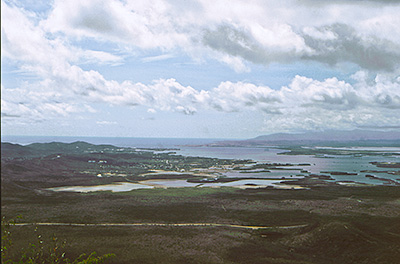
View at Guantánamo Bay US Marine Base from an observation point on Cuban territory. The yellow line crossing this picture at bottom is the border.
Following the great international interest to the US navy base, Cubans made it a tourist attraction: On the hills at three sides of the bay observation points (miradores) have been built for visitors — with parking lots and restaurants. Usually only groups of tourists come to these observation points. For an individual visit, a formal permit of military administration is necessary. With some luck it can be obtained in province capital in the hotel “Guantánamo” on the same day. So did I, with help of my driver and interpreter who had the idea to show me the American base. However, we purchased a permit for the next day, when we planned to be returning from our trip to the hotel.
For this trip to Cuban east, I hired the same driver (also as guide and interpreter) who had been working with me during the excursion to Sierra Maestra. Also the car that I rented was similar: a small Toyota RAV. Our destination was Baracoa — a town on the Atlantic coast in the remote east of the island. To reach it, we had to cross the eastern part of Sierra Maestra mountain range which was also covered by humid mountain forest and pine forest.
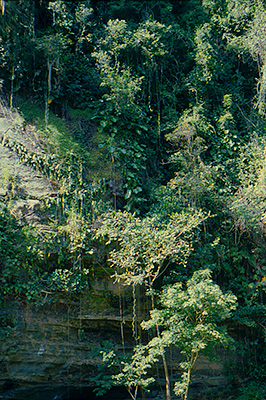
Montane rainforest on Cuchillas de Toa near Baracoa.
Baracoa is the oldest town on the island — founded in 1511 — and the first capital of Cuba. It is believed to be the place where Cuba was discovered by Europeans: Christopher Columbus landed on this coast in 1492, and, as usually, left a wooden cross whose remains are now kept as a holy relic “Cruz de la Parra” in a local church. Baracoa is situated in true tropical climatic zone, between the Atlantic Ocean and hills with the last remaining rainforest. It has a look of an ideal tropical town; a beach near it even served as a filming location for some scenes of the French “L'île de Robinson” movie (2003, with Pierre Richard as Robinson Crusoe).
My reason to go to Baracoa was however not the town itself but the forests near it. For travellers coming to Baracoa by car from the Caribbean coast the usual way is to cross the mountains on “La Farola“ — one of Cuba's best roads. This road is not only very scenic but also interesting for a biologist because it goes through three vegetation zones: dry coast savannah, montane rainforest, and dry pine forest. It is worth to make frequent stops on the way through all these areas — for photography, bird watching and herping.